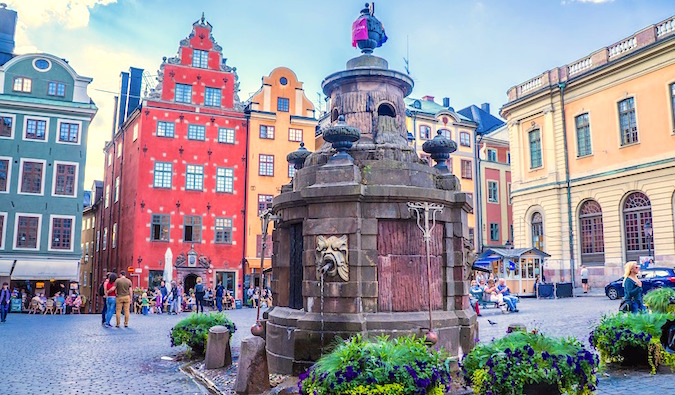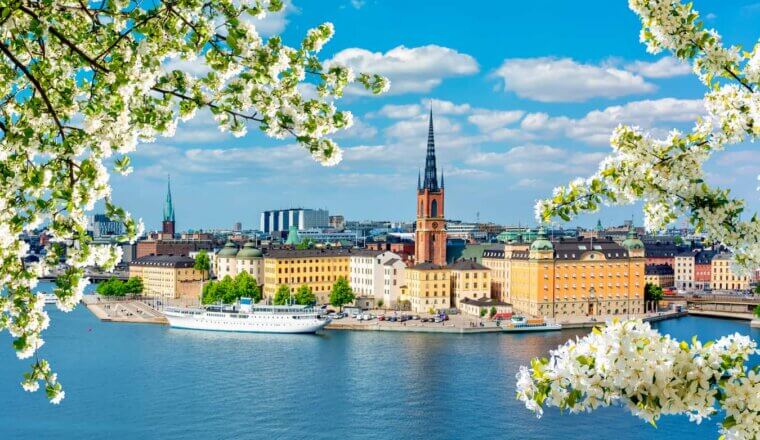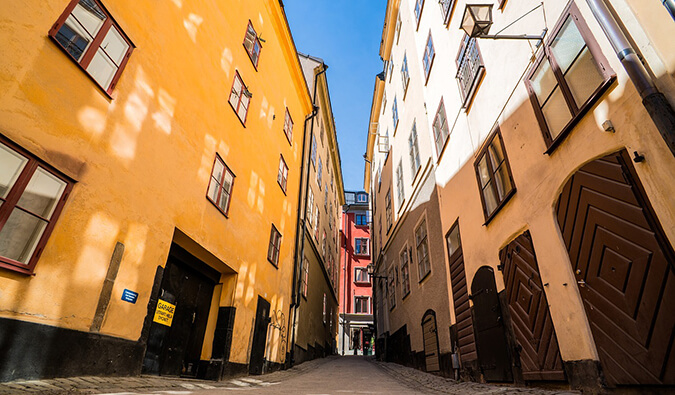
Updated: 01/17/19 | Posted: 10/12/09
People always like to debate the supposed difference between travelers and tourists.
The tourist is someone who is in and out of a place quickly, taking a few pictures, and following their guidebook to overpriced restaurants along the way.
The traveler, on the other hand, tend to move slower. They see many of the same sights as tourists but get off the beaten path more, linger in cities longer, and make more of an effort to learn about the people and culture.
And then we leave saying “we’ve seen a place,” happy in our efforts not to be a tourist.
But have we really seen anything?
Is there really a difference?
At what point can you leave a place and say “I saw and know something about life in city X.”
I don’t think we ever really can.
No matter how long we linger, little markets we explore, or non-touristy things we do, as travelers, we’ll never fully know a place- only someone who has lived there can claim that.
I’m currently in Stockholm, where the weather is much colder than I like. Stockholm itself is small and beautiful. It’s been years since I’ve seen fall colors and the beautiful changing of the leaves makes for a nice compliment to Stockholm’s beautiful buildings. The little islands connected by bridges and ringed by little boats reminds me of Venice…if someone put Venice in the middle of Maine. If they found a way to get rid of winter, I’d live here.
But because of the weather and cost here, I haven’t done many touristy things. I’ve just walked around. I saw two bad museums. I walked around some more. I people watched. I found a cool little supermarket. I haven’t seen the Royal Palace yet or the Noble Museum. I haven’t taken a boat tour. I haven’t been to the Vasa museum yet. In short, there is still much left to see.
But does that mean I still haven’t seen or experienced Stockholm? Or did I really see Stockholm when I went out food shopping with my friends, sat and relaxed with a few movies, went to a few bars and clubs, got taught naughty Swedish words, was explained Stockholm’s vibe, and taken to a few local restaurants?
Which reality is better?
Long-term travelers look for a deeper understanding of the places they visit. They have come to get to know a place through more than just a few pictures. Yet we often do the same things the three-day tourists that often are the butt of many travel jokes do. We walk, we shop, we visit museums. And while we may visit a few off the beaten path places, at best we walk away only being able to say that this place is nice, or ugly, this or that.
When I first visited Bangkok in 2005, I hated the city. As a tourist city, I still think it’s terrible. There’s not much to do or see. It’s hard to get around. It’s polluted. It doesn’t have the endless activities for travelers that Paris or New York City.
As a tourist, I held my limited view of the city as gospel. There couldn’t be any more to the place than what I saw. I had walked, I had seen the sights, and I had met the people. I had seen the city. If it was a bad tourist city, it must have just been a bad city.
This is something travelers do often. We pass through places, superficially making observations and generalizations as though we are experts and learned scholars. We make sweeping judgments based on the limited interactions we have with locals, the weather, or some little mishap we are forced to endure. We see a snapshot of life and create a complete history from that one image.
On the road, you often hear people say things like, “The French are rude” or “I was in that city. It’s boring there’s nothing to do.” But could an entire people be rude? Maybe there was something they did, as tourists, that got a rude response? Maybe they are boring and don’t really know the city? Maybe they just missed something?
Despite my short stay here and lack of any “real” sightseeing, I feel like I know Stockholm a bit more than I normally would have otherwise.
Because the heart of any place isn’t found in walking or sightseeing, it’s found in the locals. To have any understanding of a place requires you, as cliché as this sounds, to live like a local. I shadowed a few groups of friends and did what they did. I got to experience places where I was the only foreigner. I got to see daily life (and some good nightlife!). And I’m not sure, just armed with a guidebook, I could have done any of that.
But I don’t know Stockholm. (Edit: Now, after 10 years of visiting, I do! At the time, not so much!)
To really know a place, you must do something we travelers are not good at doing: staying put.
You need to make local friends and get into the rhythm of life.
It’s not until we begin to live like a local that we can truly get an appreciation for the rhythm of life there. That is why Couchsurfing is such a great thing. You can stay with locals, see where they go, go out with them, and put yourself into the local rhythm. After all, don’t we all just want to “hang out with locals”? One of the biggest ironies of travel is that we go to explore cities and meet locals but we usually just end up staying around other backpackers or travelers we’ve met.
I’m happy with my time in Stockholm. I still would never say I know Stockholm. It won’t be until I stay put that I do. But, through my friends, I got to see how the locals live and, at the end of the day, that is what traveling is all about.
We’ll never really know a place. Travelers are just like tourists. There’s no difference. But, maybe, if we all put down the guidebook, and try to meet some locals, we might scratch the surface a little deeper.
Book Your Trip: Logistical Tips and Tricks
Book Your Flight
Find a cheap flight by using Skyscanner. It’s my favorite search engine because it searches websites and airlines around the globe so you always know no stone is being left unturned.
Book Your Accommodation
You can book your hostel with Hostelworld. If you want to stay somewhere other than a hostel, use Booking.com as it consistently returns the cheapest rates for guesthouses and hotels.
Don’t Forget Travel Insurance
Travel insurance will protect you against illness, injury, theft, and cancellations. It’s comprehensive protection in case anything goes wrong. I never go on a trip without it as I’ve had to use it many times in the past. My favorite companies that offer the best service and value are:
- SafetyWing (best for everyone)
- Insure My Trip (for those 70 and over)
- Medjet (for additional evacuation coverage)
Want to Travel for Free?
Travel credit cards allow you to earn points that can be redeemed for free flights and accommodation — all without any extra spending. Check out my guide to picking the right card and my current favorites to get started and see the latest best deals.
Need Help Finding Activities for Your Trip?
Get Your Guide is a huge online marketplace where you can find cool walking tours, fun excursions, skip-the-line tickets, private guides, and more.
Ready to Book Your Trip?
Check out my resource page for the best companies to use when you travel. I list all the ones I use when I travel. They are the best in class and you can’t go wrong using them on your trip.


